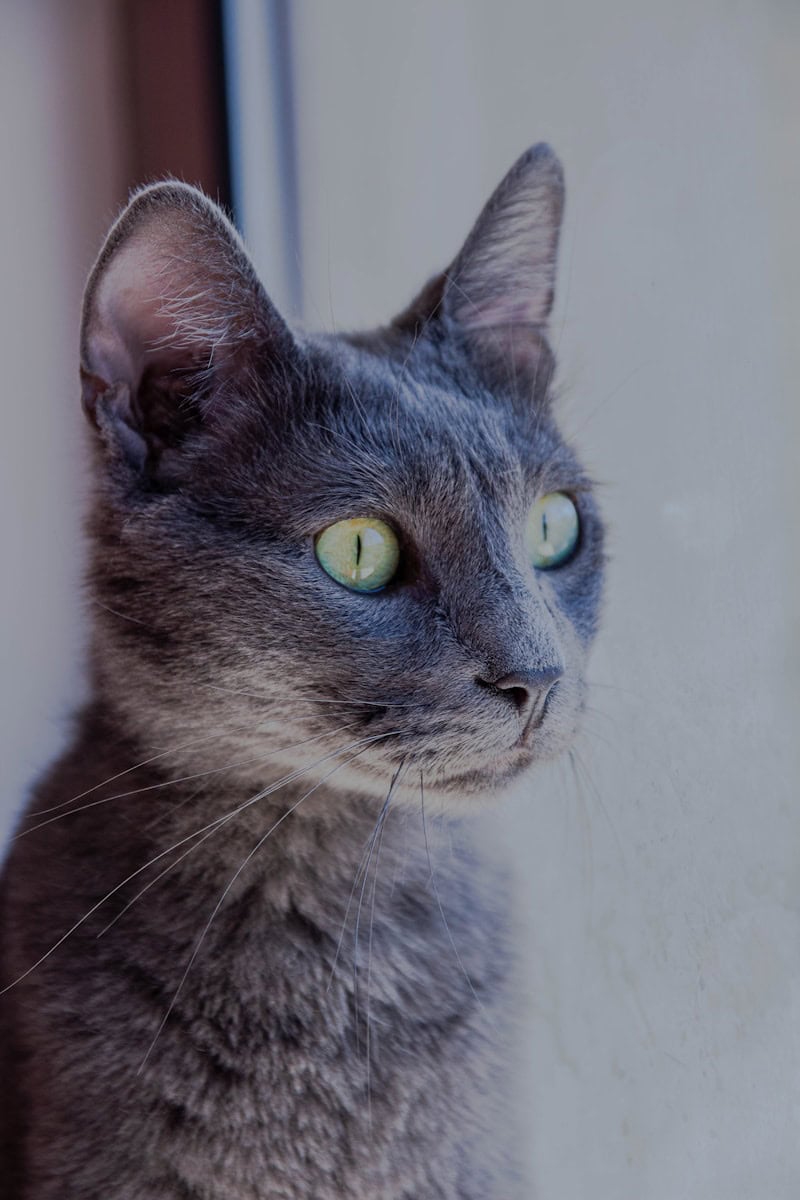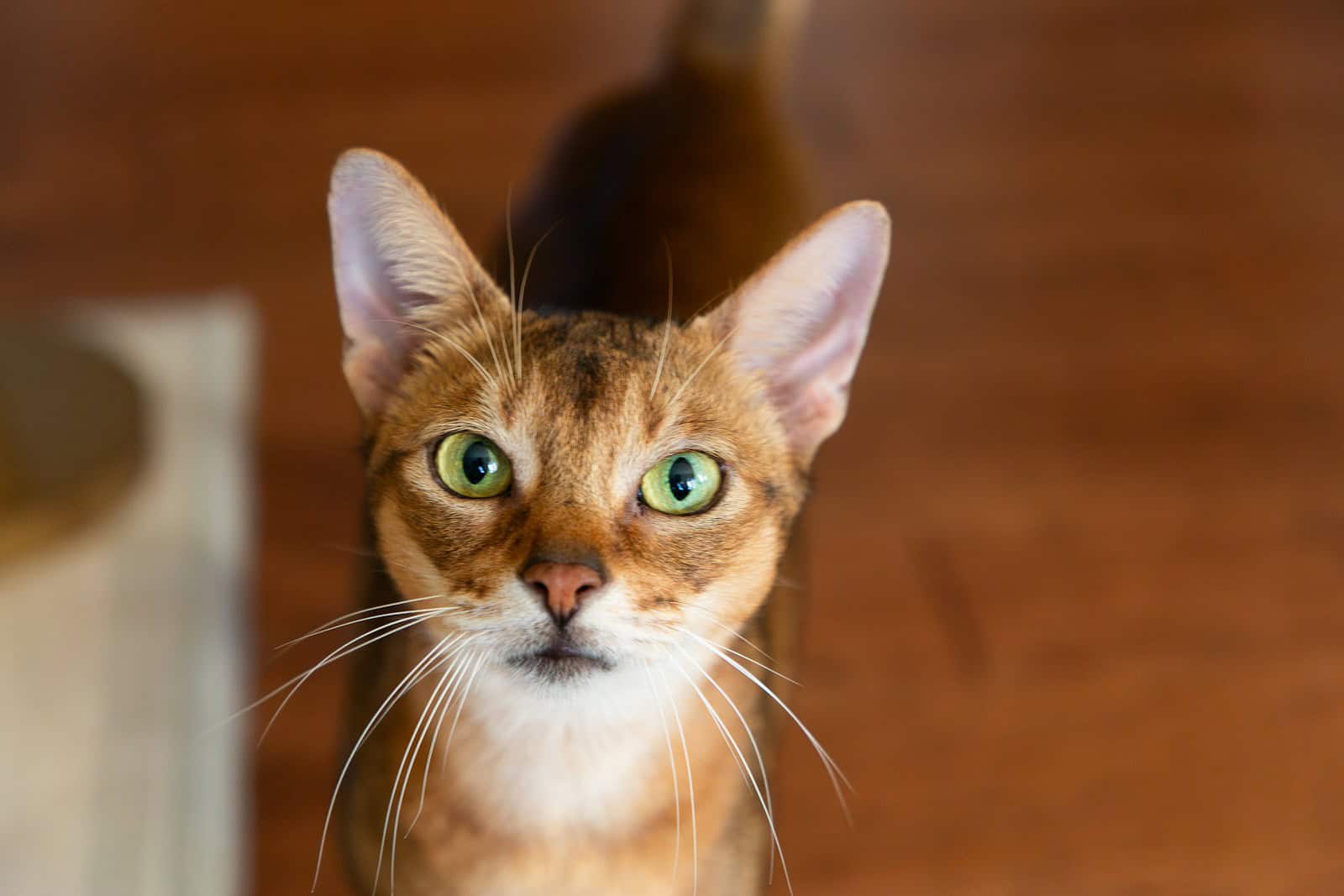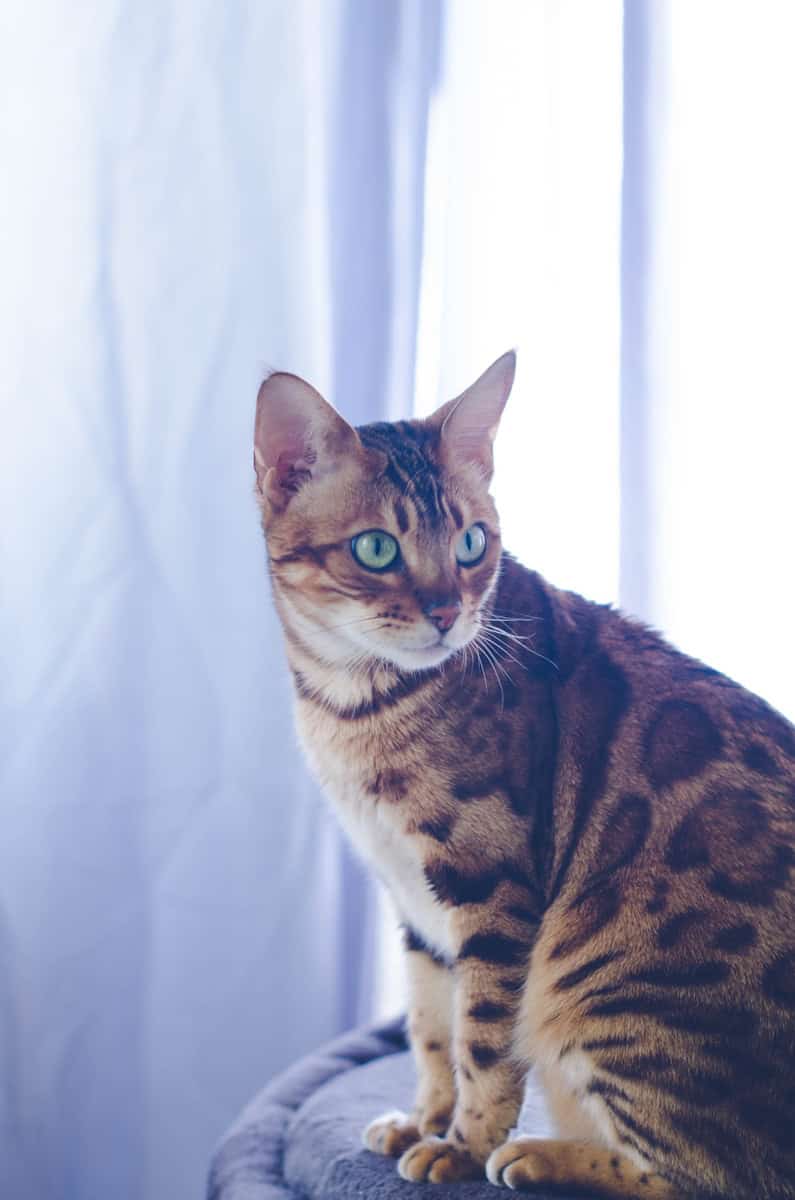Features
Hugging

Health

Activity

Hair loss

Child-friendliness

Speech

Introduction
Are you looking for a cat breed that exudes both elegance and mystery?
The Russian Blue is a true gem among cat lovers, with its silvery coat and enchanting green eyes.
This ancient and noble cat species has an intriguing history that dates back far beyond the 19th century.
Discover the world of the Russian Blue as we delve deeper into their characteristics, personality and more.
The Russian Blue, also known as Archangel Blue, is not only extremely charming to behold, but is also known for its intelligent and playful personality.
With a slender body and elegant posture, this cat breed exudes pure grace.
Want to know what colors these cat breeds can be and how best to care for their unique coat?
We dive into the details of the Russian Blue, including special characteristics and possible hereditary diseases to watch out for.
Is your curiosity piqued?
Stay with us as we explore the fascinating world of the Russian Blue.
The History of the Russian Blue
The history of the Russian Blue goes back well past the 19th century.
Although the exact origin of this cat breed is not entirely clear, it is believed that they originated in northern Russia, around the Archangelsk region.
They were first introduced to Europe in the late 19th century and quickly became popular for their unique appearance and charming personality.
The Russian Blue has an aristocratic appearance and is often considered a symbol of elegance. They were originally bred as companion animals for aristocratic families in Russia. However, it was not long before they became popular outside aristocratic circles as well.
During World War II, the number of Blue Russians declined sharply, but thanks to dedicated breeders, the breed was eventually saved.
Today they are loved all over the world and appreciated for their unique characteristics and charming personality.
Characteristics of the Russian Blue
The Russian Blue is a medium-sized cat breed with a slender body and long legs.
They have an elegant posture and exude pure grace.
Their coat is short, dense and has a silvery blue color, hence the name “Russian Blue.”
As for their appearance, they have a triangular head with large green eyes that are often described as enchanting.
Their ears are large and erect, which contributes to their alert and curious appearance.
The Russian Blue also has a long and slender tail that is nicely balanced with the rest of their body.
As for the available colors, the Russian Blue is mainly known for its silver-blue coat.
This color is caused by a combination of the gene for blue hair and the gene for silver coloring.
Although blue is the most common color, they can also have other shades such as black or white.
Personality of the Russian Blue
The Russian Blue is known for its intelligent and playful personality.
They are curious by nature and love to discover new things.
They are often involved in everything around the house and can even learn tricks such as fetch.
Although they are playful, they also have a quiet side.
They enjoy lying next to their owner while relaxing or watching television.
The Russian Blue is generally sociable and gets along well with other pets and children.
Because of their intelligence, they need mental stimulation to prevent boredom.
Providing interactive toys and offering challenging games can help keep their minds sharp.
Care of the Russian Blue
The coat of the Russian Blue is short and dense, requiring little grooming.
A weekly brushing is usually sufficient to remove loose hairs and keep their coat in good condition.
Using a soft brush or a rubber glove can help keep the coat shiny.
In addition to grooming their coat, it is also important to regularly brush your Russian Blue’s teeth and trim their nails.
This helps prevent dental problems and discomfort caused by excessive nail growth.
As for nutrition, the Russian Blue has no special dietary requirements.
However, it is important to feed high-quality cat food that contains all the essential nutrients they need for a healthy life.
Also, make sure they always have access to fresh water.
Hereditary diseases in the Russian Blue
As with many cat breeds, inherited diseases can occur in the Russian Blue.
One of the most common hereditary diseases in this breed is hypertrophic cardiomyopathy (HCM), a condition that affects the cat’s heart.
It is important to perform regular veterinary checkups to detect any health problems early.
In addition, Blue Russians may also be susceptible to polycystic kidney disease (PKD), a condition in which cysts form in the kidneys.
It is advisable to inquire about the health history of the parents when buying a Russian Blue to minimize the risk of inherited diseases.
Conclusion: The Enchanted World of the Russian Blue
The Russian Blue is a fascinating cat breed with its elegant appearance and charming personality.
They are loved for their silver-blue fur and enchanting green eyes.
If you are looking for an intelligent and playful companion, the Russian Blue may be the perfect breed for you.
Although they require little grooming, they do require mental stimulation and interaction with their owner.
Be sure to set aside time to play with them and offer them challenging games.
If you are considering welcoming a Russian Blue into your life, make sure you find a reputable breeder who takes their cats’ health seriously.
By providing proper care and love, you can enjoy a lifetime of pleasure with these enchanting cats.
Cat Hotel Russian Blue
If you wish to go on vacation, we at the Luxury Cat Hotel offer the ideal stay for your beloved cat. With large litter boxes, more than enough hiding and sleeping places and plenty of play space.



